One thing we all need to do is eat, though sad to say we don’t all choose to cook, or if we do without the spark of creativity that makes cooking and eating such a joy. This blog is primarily aimed at those relatively new to their kitchen, or wish to indulge in more exciting cooking but are not confident in developing their skills.
The problem is that equipping your kitchen can be an utterly confusing business, since the range and sophistication of gadgets and “labour-saving devices” now available is bewildering, and most of them totally unnecessary. If you fancy a bash, do try them out – but remember that most will languish in the cupboard unused thereafter!
A good example is the egg poacher. My mother had one when I was a child, and probably still does. It consists of a pan, into which you put boiling water, with a top tray into which fitted semi-circular metal inserts. You greased the metal poachers then broke your egg in, put it on the hob and hey presto! a few minutes later you had your poached egg, if it came out in one piece. It was invariably overdone, but the real point is that with a little skill and technique all of the above is superfluous. You can do it with clingfilm, though personally I always found that method a faff too – all you need is a pan and a slotted spoon to make perfect poached eggs!
Yes, I do have a number of kitchen gadgets, to be discussed in “optional extras” below, but I would much sooner advise the aspiring cook on where better to invest money in order to get the best results. I’ll assume you have a cooker, fridge and freezer, though in each category there are good, bad and indifferent, so shop around and try a few out, where possible! So here is my list of the things you do need, both in terms of equipment and store cupboard items:
Essentials
- Knives: Blunt, poor quality knives are responsible for far more injuries than good quality sharp knives. The more ambitious you get in your cooking, the more you need a really good set that feel right to you. First thing to note is that the best are made from layers of forged carbon steel folded together around a hard core, with a handle riveted to the core – or forged into a single piece of steel (look out also for ceramic and alloy blades, which I hear are excellent too.) A good knife will be well-balanced, feel comfortable in the hand and work with minimal effort. The benefits are that they stay sharp, never rust, stain or get pitted by hard objects, can be sharpened repeatedly, and stand the test of time. A good knife will keep you going day in, day out for many years – cheap knives are a false economy. Find a good set, including a full-length cook’s knife, slicing/carving knife and fork, boning knife, serrated bread knife, an all-purpose veg knife and whatever else you can make good use of. See here for a guide to knife buying. Remember also a good sharpening steel, ideally a stone.
- Boards: For good hygiene you need separate boards for raw and cooked food, though it’s also wise to have different boards labelled to avoid cross-contamination, which is one argument in favour of colour-coded plastic or glass boards. After all, who wants fruits to taste of onion and garlic? However, my favourite board is cross-grain maple, it is thick and heavy, has non-slip feet and will last a lifetime. Wood has the benefit of being naturally disinfectant too, but horses for courses – a combination of good quality boards will last well and do the job.
- Saucepans & casseroles: Buy bad cookware and you’ll suffer for it, and replace it often too. You won’t get even dissipation of heat, food will burn easily and the results will not be good. If I had to choose just one item it would be a heavy cast-iron Le Creuset casserole, which you can use on the hob or in the oven. The weight factor and cost puts off many people, though if you don’t mind developing good arm muscles the end product is fantastic – and there is a seconds shop at Freeport! That said, a good range of pots and pans is essential. I have a few non-stick items (on which I never use a scourer or metal utensil), all of which have a good solid copper-plated bottom to spread the heat, including frying and sauté pans, but a good range of sizes and shapes without non-stick is advisable, as are clear lids and a steam hole – helpful but not essential. Also invest in a good stockpot and a solid wok with a strong handle that allows you to toss the food. I also recommend a a griddle pan and a small cast iron egg/omelette pan – though do bear in mind that eggs continue to cook after they leave the heat, and cast iron retains heat.
- Cookware: tins of various shapes and sizes are always handy, as are a range of ovenproof glass or stoneware bowls, casseroles and dishes. Oven-to-table works for me, and I’d recommend experimenting with one dish cooking too.
- Tools & utensils: The obvious candidates including spatulas, spoons, slotted spoons and so on tend to come as sets, but there are a number of additions you should remember:
- Spaghetti serving spoon is invaluable!
- Serving tongs
- Can opener – one with an easy action that doesn’t slice fingers desirable!
- Peeler – one area where modern variants with easy-grip handles outperform the old fashioned variety
- Masher – personally I don’t like ricers, but either way do experiment with the mashing tool that works best for you. Many are too flimsy! See here for an analysis of the best on the market.
- Grater – I use tiny graters, box graters and occasionally a rotary one for parmesan
- Garlic crusher is optional. I don’t have one though many swear by them.
- Hand whisk – again, more than one gets good results. I have a tiny silicon-coated whisk that is great for eggs.
- Zester, to help you capture the essence of your citrus fruit.
- Kitchen scissors, including some boning scissors
- If pizzas are your thing, a pizza cooking stone or tin, and a rotating cutting knife are both handy.
- Ditto, if you’re into baking you will need a good rolling pin and other accessories.
- Pestle and mortar
- Salt and pepper mills
- If you like tea, a tea-pot and strainer!
- Measuring jugs in different sizes, and also measuring spoons
- Fat drainers are useful but not essential
- And don’t forget a reliable corkscrew and bottle opener!!
- Electric gadgets & optional extras
- Kettle, of course. Not personally into these mini-water boilers.
- While hand whisks are always useful you need some form of electric blender and accessories. I have a hand blender, which is good though not ideal for all circumstances. Mixers are quite handy, but a blender of some description is essential.
- If you have pretensions to being a serious cook, a microwave is useful though not essential, whatever anyone might tell you. It’s helpful for warming and defrosting, to be sure.
- If you have a griddle pan you won’t really need a separate grill, though they can be useful things to own.
- Toasters by all means, and toasted sandwich makers. My Foreman grill is used more for paninis and sarnies than for meat, nowadays!
- Waffle makers and similar devices are a bit ho hum, but use them if you fancy!
- Bread makers are also a substitute for doing the kneading and proving yourself, and can be dispensed with. However, it’s lovely to set the timer to get fresh hot bread for when you’re ready to cook breakfast!
- I own a juicer, which is a lovely piece of kit but I only use it once in a blue moon.
- Not sure how much I would use a coffee maker either, since an expresso machine is a faff to clean out. However, something simple like a cafetière works well and all bits can be thrown in the dishwasher.
- Having an Aga, I rarely need a slow-cooker, but otherwise they are handy kit which allows you to have dinner for the family ready and waiting after a day out.
- You could get away without a proper deep fat fryer, but for me it’s better than filling a pan with oil, particularly if you have temperature control and a good draining basket. If you have money to burn, try the variety that allows you to fry with just a spoonful of oil, though I personally have not tried one.
Store Cupboard
- Basmati rice (to accompany any curry, stir-fry or oriental dish – I buy it in 10k sacks) and arborio or carneroli rice (for risotti.)
- A variety of top quality pastas, including spaghetti or linguine, lasagne, maybe penne, fusilli or other species good for gripping sauces; and some soup pasta – at the minimum.
- Also oriental noodles, fresh vacuum-packed or dried. The latter have more texture, but do remember to rehydrate them first.
- Salt almost goes without saying, but do include proper sea salt flakes such as Maldon salt, ideally the smoked variety. It may seem odd in saying so but it truly does add character to your food.
- Peppercorns are equally vital, either for milling, cracking with the pestle and mortar, or using whole. Worth getting black but also others, depending on your purpose.
- Sugar: caster and demerera sugars are both good for cooking purposes, and I’m not just talking baking and confectionary either.
- Dried herbs: great if you can grow your own fresh herbs, but as well to have thyme, parsley, oregano and bay leaves at the very least.
- Pulses: many you could stock, and to some extent it’s down to personal preference, but I generally keep 2-3 varieties of lentils/dhal, split peas, haricot beans, red kidney beans, chick peas, butter beans, borlotti beans and maybe a few more. You can buy them in the can, but dried ones are perfect – so long as you remember to soak them overnight and boil first.
- On which subject, a few tins of baked beans never go amiss either.
- Ditto jams and other conserves, to taste.
- Spices: I have very many spices, but a good starter set would include cumin, coriander, tumeric, smoked paprika, cayenne pepper, cinnamon and cardamom pods.
- Passata and/or tomato puree. Also tinned chopped tomatoes, decidedly one of the few really excellent canned products.
- Easy garlic – for those occasions when you don’t have any fresh in stock! Garlic puree is also useful.
- Lea & Perrins Worcester sauce – of course!
- Soy sauce – I always have light soy, but you may like dark too.
- Dried porcini, and possibly other dried mushrooms.
- Dried fruit, including apricots, sultanas and desiccated coconut.
- Unsalted nuts, including cashews and toasted flaked almonds.
- Oils: including a good quality groundnut or sunflower oil, and at least one olive oil, preferably an extra virgin oil that can be used in salads. I also keep sesame and chilli oils, but there are many more, depending on your tastes.
- Vinegars: malt for use with fish and chips, wine and/or cider and/or sherry vinegars for a variety of other purposes, including salads. Balsamic is very nice to have, but invest in a really good aged balsamic. It can be used in cooking many dishes as well as salads.
- I hesitate to say “cooking wine” because if it ain’t good enough to drink it’s certainly not good enough to cook with. However, a bottle of cheapish red and white can be used to great effect to add depth to a huge range of recipes, so do keep some in.
- Hot chilli sauce & also sweet chilli sauce.
- Tomato ketchup and also brown sauce, both of which are excellent cooking ingredients if you know how to use them.
- Mustard powder, which is in my humble opinion more useful than made up mustard.
- Ditto shredded horseradish, if you can stand the heat!
- Good quality stock cubes, though mostly I prefer to make my own and freeze it in cubes to pop directly into a dish.
- Cornflour, though I do cheat and use thickening granules, which have the advantage of not needing to be stirred into water.
- You may also want other varieties of flour, plain and/or self-raising, depending on your cooking. I have dried yeast in for bread-making.
- And if cake-making is your style, cooking chocolate, icing sugar and a whole bunch more things too!
- Frozen veg: the only ones I would contemplate keeping for emergencies are petits pois and spinach, the latter mostly for curries.
- Jars of roasted, peeled red peppers: you can sometimes buy these in pound shops, and they are brilliant. Not only are the peppers excellent, but the sweetened vinegar in which they recline can be used in many dishes.
- Greek yogurt is a fair alternative to cream and goes well in curries and a variety of other dishes. But sometimes, there really is no alternative but good cream :).
- Lemon juice, and as an alternative, lime juice.
There are many more things I could add to that list, but that’s a fair starter pack, and certainly enough to get your cooking off to a flier as the basis for many dishes.

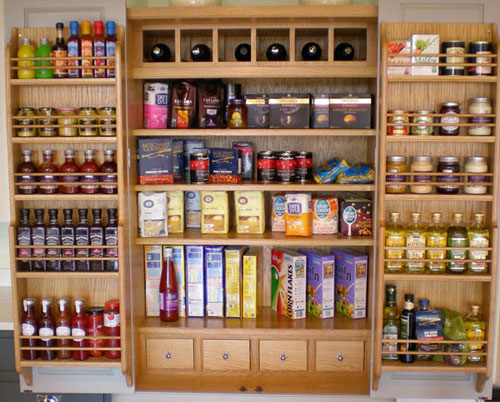
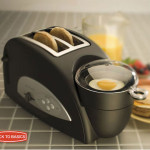
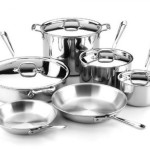
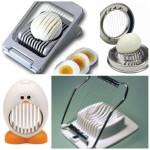


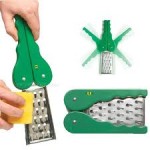
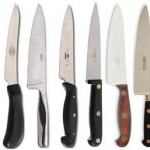
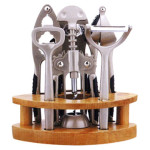

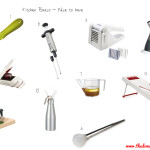

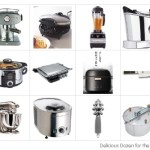
Hiya, This is a lovely recipe, thank you for sharing it with us. I am a good food lover and I like making bread and butter pudding.